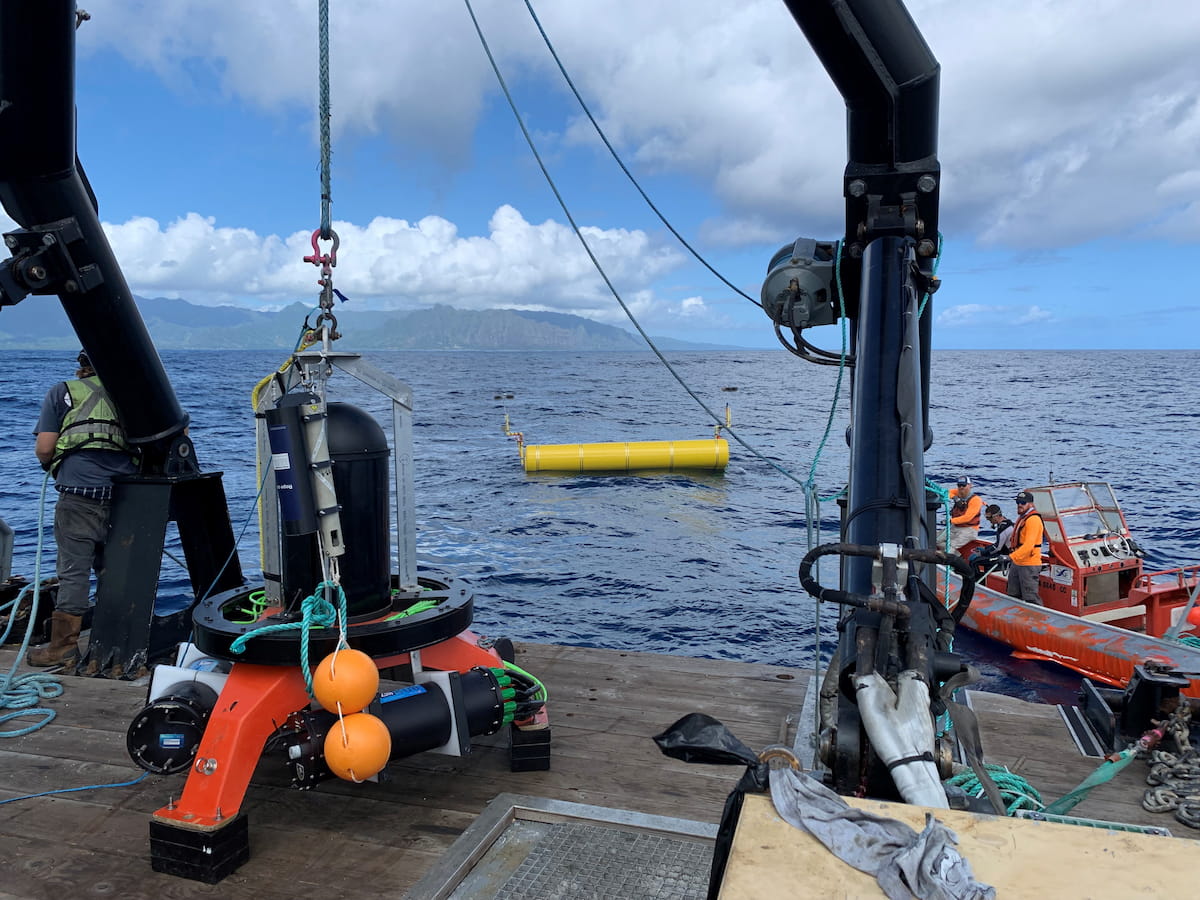Many renewable energy solutions like solar and wind, both onshore and offshore, have reached commercial scale and are being deployed widely across the globe. Now other new marine renewable energy technologies, such as wave and tidal energy, are picking up momentum and can play a critical role to complement large utility-scale energy.
Electricity from waves and tides is generated when devices in the water harness the kinetic energy of the ocean. The technologies to capture wave and tidal energy may provide practical clean energy options for small remote island and rural coastal communities and potentially large urban cities down the road. Ocean Conservancy supports the development of responsible wave and tidal energy as these energy sources are key to a just energy transition and protect the ocean from climate change.
Never miss an update
Enter your email and never miss an update
again or contact 1.888.780.6763
var form = document.getElementById(’email-signup-66eddae658028′);
form.querySelector(‘.rsform__field–email’).addEventListener(“nb:result”, e => {
var nbStatus = form.querySelector(“[name=”nb_email_status”]”);
var nbDate = form.querySelector(“[name=”nb_validation_date”]”);
var currentDate = new Date();
nbStatus.value = e.detail.result.response.result;
nbDate.value = currentDate.toISOString().split(‘T’)[0];
grecaptcha.enterprise.ready(async () => {
var tokenField = document.querySelector(“#email-signup-66eddae658028 [name=”token”]”);
var token = await grecaptcha.enterprise.execute(‘6Lcmr3shAAAAAAVRlvJrsUufEEQuItzNDlkpmB2g’, {action: ‘verify’});
tokenField.value = token;
});
});
<!– –>
Currently most wave and tidal devices are small-scale demonstration or test projects with limited electricity generation. This is the ideal time to learn as much as we can before these futuristic generators become mainstream and widespread.
One area of interest for me and others at Ocean Conservancy is the effect these devices might have on the surrounding environment. Because, when you see these sometimes bizarre looking metal hulks, it’s hard not to wonder what is happening below the water.
Recently scientists released a massive report summarizing the past four years of global studies, data and the collective understanding of the effects marine renewable energy devices have on their local marine environment.
This report, the International Energy Agency Ocean Energy Systems (OES)- Environmental 2024 State of the Science report, is published every four years and covers a range of information about potential impacts wave and tidal devices can have on the surrounding marine habitats and wildlife. These include collision risk, underwater noise, generation of electromagnetic fields, habitat changes, entanglement, oceanographic system changes (such as the decreases in wave heights or water circulation) and animal displacement (such as alteration of migratory pathways or movements) due to device operations.
The 2024 State of the Science report concludes that, thanks to additional studies, concerns have been lowered for some of these risks, particularly for small projects (think one to six devices). These downgraded risks include the impacts of electromagnetic fields, underwater noise, habitat changes for wildlife and oceanographic system changes. This is a positive development, though more studies are still needed for small- and larger-scale projects, which can help inform strategies to avoid, mitigate and monitor for impacts on future projects.
One of biggest remaining unknowns regarding wave and tidal devices is whether animal collisions with any of the rotating turbines or moving plates are likely to be significant, as any physical contact with wildlife could cause injury or mortality. Currently, the best practice is for developers to mitigate collision risk through careful siting away from critical habitats. For some pilot projects, video evidence has shown that animals, including mammals and fish, avoid marine and wave energy devices while in operation. The OES-Environmental report looks at this risk closely, noting that more research is needed from specific geographic areas, like tropical environments, to improve our scientific understanding.
The OES-Environmental report also, for the first time, included a summary of interactions with human communities. The report highlights the socioeconomic effects of the physical infrastructure and industry activities which might bring new local career opportunities and increased energy resilience, along with the need to balance recreational and cultural heritage priorities. It also emphasized the need for engaging local communities early and often about project plans and progress.
In the United States, the development of wave and tidal energy technology is gaining momentum. The federal government announced provisional funding for tidal pilot projects in Alaska and Washington this past winter and just announced a significant investment in wave energy projects this month. In addition, a bill is before Congress to boost funding for new wave and tidal projects, workforce development and help for communities to transition away from fossil fuels. All these projects could provide platforms for environmental monitoring and study.
As marine renewable energy projects materialize across the world, technology developers, regulators and policymakers will need the valuable insights from this report. Its research and analysis provide critical support for the responsible and just development of these new clean ocean energy sources. With this global information in hand, the equitable transition to renewables and away from fossil fuels takes another step forward.
At Ocean Conservancy, we are paving the way for a new clean ocean energy future, where we can reduce our dependence on fossil fuels and protect the ocean and its wildlife and communities from the worst impacts of climate change. Take action to support the responsible development of wave and tidal energy technologies to tackle the climate crisis.
The post Effects of Wave and Tidal Energy appeared first on Ocean Conservancy.

